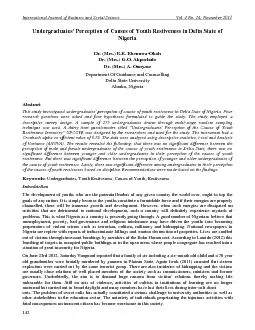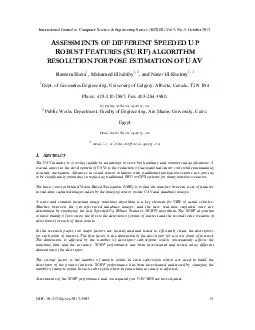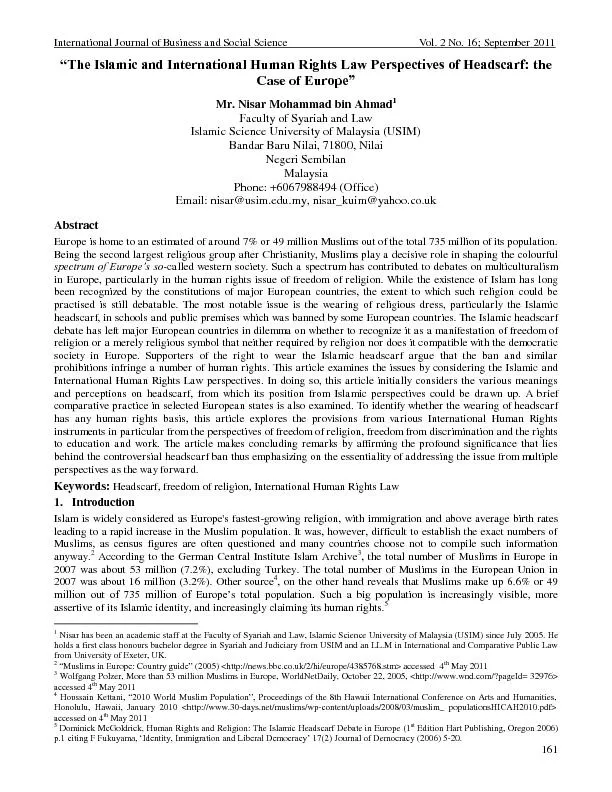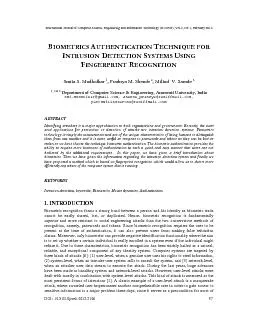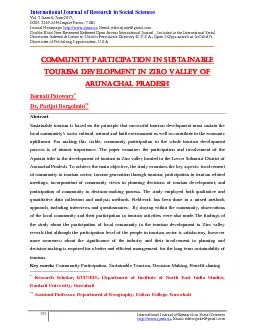PDF-International Journal of Business and Social Science
Author : stefany-barnette | Published Date : 2015-10-11
Vol 4 No 1 4 Novem ber 2013 142 Undergraduates Perception of Causes of Youth Restiveness in Delta State of Nigeria Dr Mrs EE Ebenuwa Okoh Dr Mrs GO Akpochafo Dr
Presentation Embed Code
Download Presentation
Download Presentation The PPT/PDF document "International Journal of Business and So..." is the property of its rightful owner. Permission is granted to download and print the materials on this website for personal, non-commercial use only, and to display it on your personal computer provided you do not modify the materials and that you retain all copyright notices contained in the materials. By downloading content from our website, you accept the terms of this agreement.
International Journal of Business and Social Science: Transcript
Download Rules Of Document
"International Journal of Business and Social Science"The content belongs to its owner. You may download and print it for personal use, without modification, and keep all copyright notices. By downloading, you agree to these terms.
Related Documents

